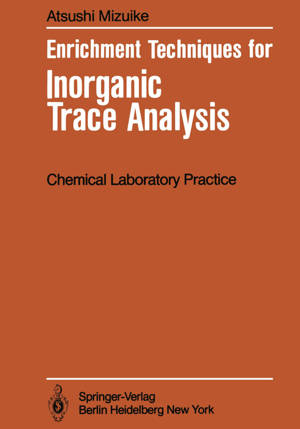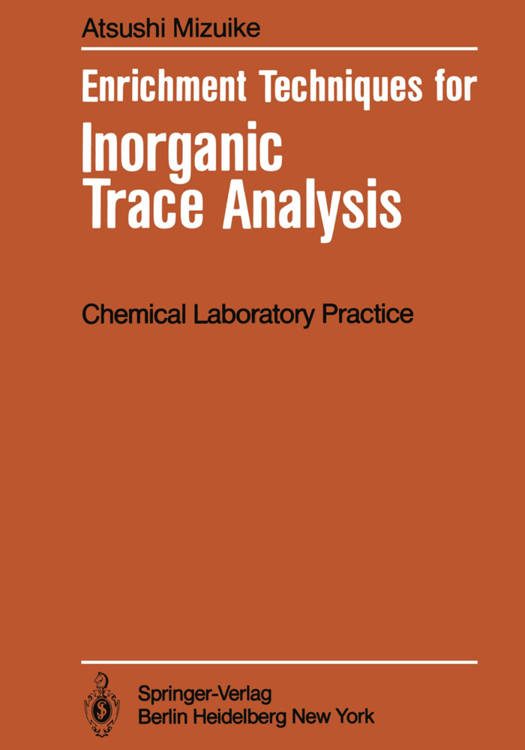
- Afhalen na 1 uur in een winkel met voorraad
- Gratis thuislevering in België vanaf € 30
- Ruim aanbod met 7 miljoen producten
- Afhalen na 1 uur in een winkel met voorraad
- Gratis thuislevering in België vanaf € 30
- Ruim aanbod met 7 miljoen producten
Zoeken
Omschrijving
6 9 The significant role of trace elements present at the Jlgfg (10- gig), ngfg (10- gig) 12 and pgfg (10- gig) levels in geological, biological, environmental and industrial materials has increasingly been recognized in science and technology. To detect and determine trace elements, we usually use modern optical, electrochemical and nuclear analytical techniques. Althouih most of them are highly sensitive and selective, preliminary enrichment techniques are required to extend the detection limits, improve precision and accuracy of analytical results, and to widen the scope of the determina- tion techniques. About two decades ago, I wrote a chapter "Separations and Pre- concentrations" in "Trace Analysis: Physical Methods" edited by Prof. G. H. Morrison (Wiley-Interscience, New York, 1965). Since then, the progress in this field has been remarkable. This 'monograph is intended as a laboratory book directly applicable to the practice, but is not a so-called "cookbook" which offers detailed laboratory instruc- is useful for all analysts solving problems in inorganic trace tions. I hope this book analysis and appreciating the applicability and limitations of enrichment techniques combined with instrumental determination techniques. In three introductory chapters, general aspects and control of contamination and loss are discussed. The following eight chapters deal with enrichment techniques based on volatilization, liquid-liquid extraction, selective dissolution, precipitation, electrochemical deposition and dissolution, sorption, ion exchange, liquid chromato- graphy, flotation, freezing and zone melting. The final two chapters are devoted to special enrichment techniques used in trace analyses of natural waters and gaseous samples.
Specificaties
Betrokkenen
- Auteur(s):
- Uitgeverij:
Inhoud
- Aantal bladzijden:
- 144
- Taal:
- Engels
- Reeks:
- Reeksnummer:
- nr. 19
Eigenschappen
- Productcode (EAN):
- 9783642688560
- Verschijningsdatum:
- 10/12/2011
- Uitvoering:
- Paperback
- Formaat:
- Trade paperback (VS)
- Afmetingen:
- 170 mm x 244 mm
- Gewicht:
- 258 g

Alleen bij Standaard Boekhandel
+ 105 punten op je klantenkaart van Standaard Boekhandel
Beoordelingen
We publiceren alleen reviews die voldoen aan de voorwaarden voor reviews. Bekijk onze voorwaarden voor reviews.











